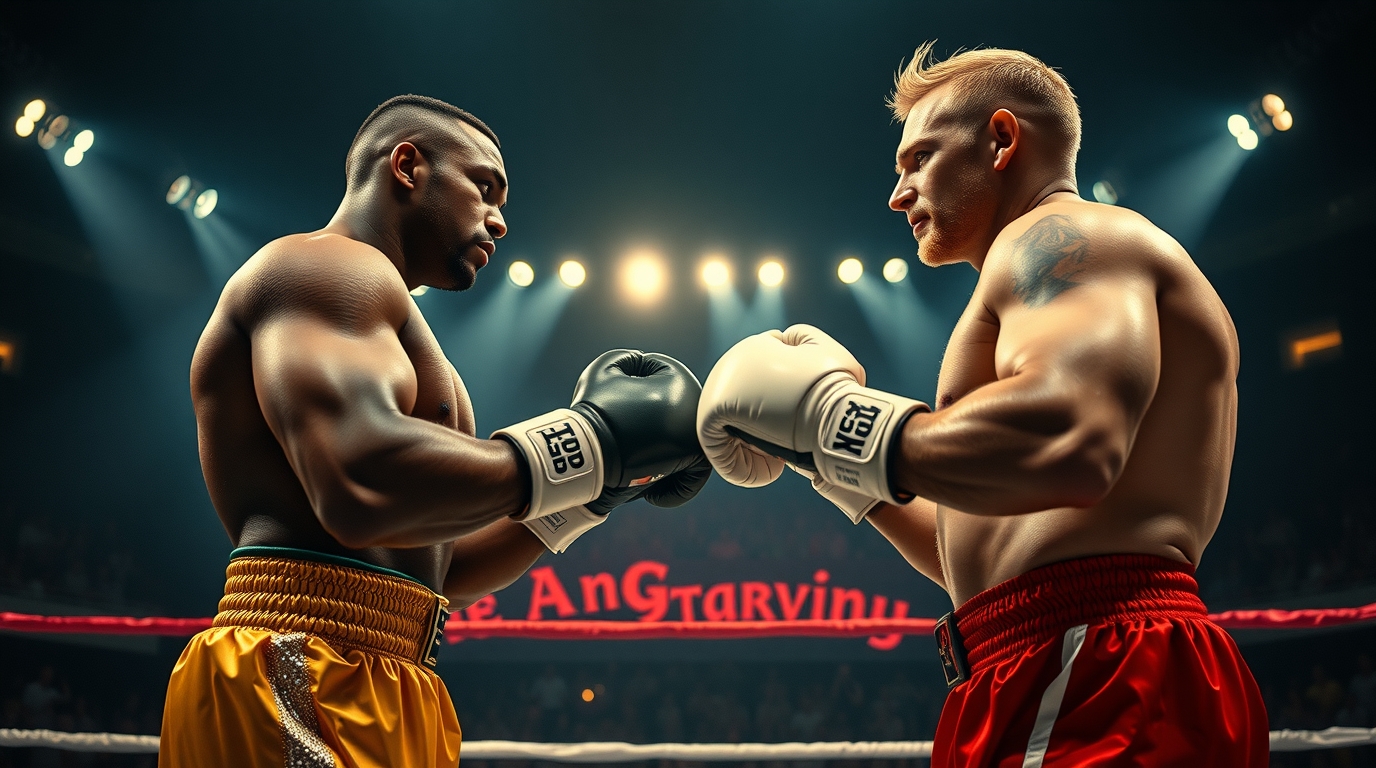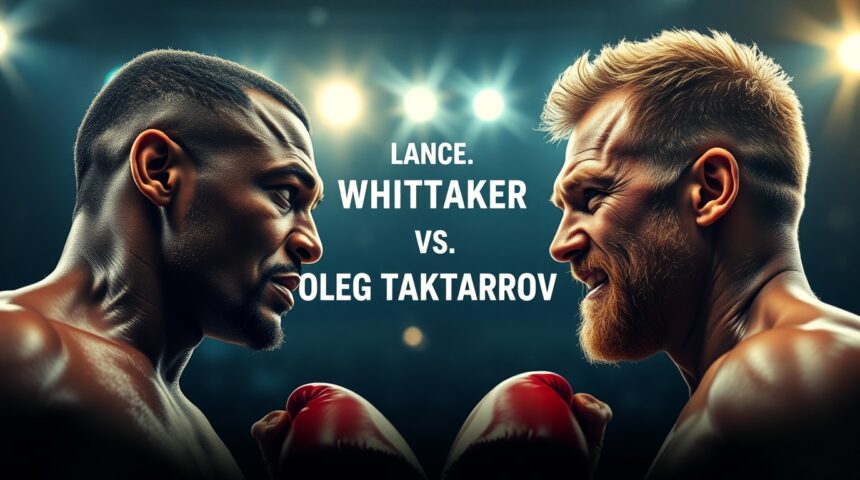Boxing fans love a clash of contrasts — the power of youth against the wisdom of experience, the American heavyweight dream facing a seasoned international fighter. The Lance Whitaker vs Oleg Taktarov matchup captured that very essence. Though it never made mainstream headlines like Tyson–Holyfield or Lewis–Klitschko, this encounter carried all the ingredients of a compelling boxing story: two distinct fighters, two fighting philosophies, and one question that still lingers decades later — who really won?
This article dives deep into the untold background, the fighters’ journeys, the technical and psychological dimensions of the fight, and how it shaped their respective legacies. Whether you’re a longtime fan of 1990s boxing or discovering these names for the first time, this breakdown will help you understand why the Lance Whitaker vs Oleg Taktarov fight remains a fascinating chapter in combat sports history.
The Background: Two Worlds Collide
To understand the significance of this matchup, it’s essential to know who these fighters were. Lance “Mount” Whitaker, an American heavyweight standing at nearly seven feet tall, emerged from the California boxing scene in the mid-1990s. Known for his reach, athleticism, and powerful jab, Whitaker represented the modern American heavyweight prototype — tall, technical, and built for distance fighting.
Oleg Taktarov, on the other hand, was already a cult figure in mixed martial arts. A Russian-born fighter and former UFC tournament champion, Taktarov transitioned into boxing after achieving fame for his toughness and grappling skill inside the octagon. His entry into boxing brought curiosity: could his experience in combat sports translate into the sweet science?
The Lance Whitaker vs Oleg Taktarov fight symbolized more than just a bout — it was East versus West, boxing versus MMA, and a generational test of grit.
Lance Whitaker: The American Giant
Whitaker’s rise through the heavyweight ranks was marked by impressive performances and raw potential. Born in 1971 in Los Angeles, he turned professional in 1996 after an extensive amateur career that included Golden Gloves victories. With his 6’8” frame and 84-inch reach, he could dominate from the outside, using his jab to control the pace and wear down opponents.
In the ring, Whitaker’s calm composure often contrasted with the chaos that surrounded heavyweight boxing in the late ’90s. While the division was ruled by legends like Lennox Lewis and Evander Holyfield, Whitaker quietly built his record, earning respect for his consistency and conditioning. When rumors of a match with Oleg Taktarov surfaced, it intrigued fight fans. Could a disciplined, pure boxer like Whitaker handle the unpredictable, rugged approach of a fighter like Taktarov?
Oleg Taktarov: The Russian Bear of Combat Sports

Known affectionately as “The Russian Bear,” Oleg Taktarov earned international recognition in the early days of the UFC, where he became one of the organization’s first true stars. A Sambo and Judo specialist, Taktarov possessed a granite chin and unbreakable will — traits that made him a fan favorite.
Transitioning into professional boxing wasn’t easy. Boxing required precise timing, strict stance discipline, and a level of hand speed rarely seen in MMA. Yet, Taktarov’s motivation wasn’t about titles or fame — it was about proving his versatility as a fighter. He wanted to show that he could compete under any rule set, against anyone. The Lance Whitaker vs Oleg Taktarov fight would become a test not only of skill but of identity.
The Build-Up: Clash of Styles and Expectations
Leading up to the fight, the buzz was understated but electric among fight enthusiasts. Whitaker entered as the favorite — a trained, taller boxer with superior reach and conditioning. Taktarov, while respected for his MMA toughness, was viewed as an outsider stepping into unfamiliar territory.
Promoters billed the fight as a unique showcase of cross-discipline talent. Analysts debated whether Taktarov’s unorthodox movement and counterpunching could disrupt Whitaker’s rhythm. The boxing purists predicted a straightforward win for Whitaker, but Taktarov’s supporters believed his experience under pressure would make it competitive.
What neither camp fully anticipated, however, was how their stylistic clash would create one of the most technically intriguing matchups of that era.
Inside the Ring: The Fight Unfolds
From the opening bell, Lance Whitaker vs Oleg Taktarov showcased contrasting strategies. Whitaker immediately established his jab, keeping Taktarov at bay with long-range punches and measured footwork. His plan was to maintain distance, frustrate the Russian, and capitalize on counterpunching opportunities.
Taktarov, in contrast, pressed forward with relentless determination. His head movement was awkward but effective, and he occasionally slipped under Whitaker’s jab to land body shots. While not textbook boxing, his pressure tested Whitaker’s composure.
As rounds progressed, Whitaker’s conditioning and boxing IQ began to shine. He exploited Taktarov’s tendency to square up, landing clean right hands. Yet Taktarov refused to back down, earning crowd respect with his toughness and refusal to quit. The match wasn’t a slugfest — it was a strategic duel that demanded patience and precision.
The Turning Point: Endurance Over Aggression
Around the middle rounds, Whitaker’s superior stamina became evident. His punches grew sharper while Taktarov’s defense started to fade. Still, the Russian kept advancing, hoping to connect with a looping overhand or force Whitaker into an inside exchange.
What made this fight memorable was not a single knockout or dramatic finish, but rather the persistence both men displayed. Taktarov’s relentless pressure forced Whitaker to stay disciplined, while Whitaker’s composure showcased what happens when pure boxing technique meets raw willpower.
By the final rounds, Whitaker appeared in full control — dictating distance, landing crisp combinations, and avoiding unnecessary risks. Taktarov’s face showed the marks of battle, but his heart never wavered.
The Decision: Who Really Won?
When the final bell rang, the judges rendered their verdict: Lance Whitaker by unanimous decision. On paper, it was the expected outcome. Whitaker’s jab, ring generalship, and scoring advantage made him the clear technical winner.
Yet, many fans and analysts argued that Oleg Taktarov won a moral victory. He proved that a mixed martial artist could hold his own against a world-class boxer under boxing rules. His courage and tenacity reminded the audience why combat sports, at their core, are about spirit as much as skill.
So, who really won? If you measure by technique, Whitaker did. But in terms of legacy, both fighters emerged stronger. Whitaker added another victory to his record, and Taktarov cemented his reputation as one of the most versatile combat athletes of his era.
Aftermath: Legacy and Lessons
The Lance Whitaker vs Oleg Taktarov fight may not have redefined boxing history, but it highlighted valuable lessons for fighters across disciplines. For Whitaker, it reinforced the timeless importance of fundamentals — jab, footwork, and distance control. For Taktarov, it proved that courage and adaptability transcend sport boundaries.
After the bout, Whitaker continued his boxing career, facing notable opponents like Lou Savarese and Monte Barrett, while Taktarov shifted focus toward acting and training. His Hollywood appearances, including roles in “Heat” and “Predator,” made him a recognizable face beyond combat sports.
Their paths diverged, but their brief intersection remains a testament to mutual respect and the shared language of fighters everywhere.
Technical Analysis: Boxing vs MMA Styles
From a technical standpoint, this matchup is a study in contrasts. Whitaker’s approach exemplified traditional boxing mastery — straight punches, disciplined footwork, and patience. Taktarov’s style, though unconventional, embodied the improvisational mindset of a mixed martial artist.
This fight underscored why boxers dominate under boxing rules. The specialization in timing, punch selection, and stamina management gives them an edge. However, Taktarov’s performance also showed that hybrid fighters bring unpredictable rhythm and resilience that can unsettle even seasoned boxers.
In modern terms, this early cross-discipline fight foreshadowed the MMA-versus-boxing trend we see today — from McGregor vs Mayweather to Ngannou vs Fury.
Cultural Impact and Recognition
Though not a pay-per-view blockbuster, the Lance Whitaker vs Oleg Taktarov bout holds cultural significance. It reflected a time when combat sports were expanding beyond strict boundaries. MMA was still young, boxing was seeking revival, and audiences were curious about how these worlds could intersect.
For American fans, Whitaker represented the disciplined heavyweight tradition. For global audiences, Taktarov embodied resilience and crossover spirit. In retrospect, their meeting bridged fan communities that once viewed each other as rivals.
Final Thoughts
The Lance Whitaker vs Oleg Taktarov fight remains a fascinating piece of combat sports history — not for controversy or spectacle, but for what it symbolized. It brought together two warriors from different paths, united by the desire to test themselves.
Lance Whitaker proved that fundamentals and preparation win fights. Oleg Taktarov demonstrated that heart and courage make legends. Together, they reminded fans that victory isn’t always measured by the scorecards, but by the legacy you leave behind.
In the end, both men won — one on the judges’ sheets, the other in the hearts of those who value spirit over statistics.
Frequently Asked Questions (FAQs)
1. When did Lance Whitaker and Oleg Taktarov fight?
The Lance Whitaker vs Oleg Taktarov fight took place during the late 1990s, a period when both fighters were transitioning into new stages of their careers. The exact date varies by promotional record, but the bout is remembered as a unique meeting between a rising boxer and a crossover MMA fighter.
2. Did Oleg Taktarov have other professional boxing matches?
Yes, Taktarov competed in several professional boxing bouts, though he was primarily known for his MMA career. His foray into boxing was motivated by curiosity and the challenge of mastering another combat discipline.
3. What made Lance Whitaker a standout heavyweight?
Whitaker’s combination of height, reach, and technical skill made him a formidable opponent. His jab and control of distance allowed him to dominate fighters who couldn’t adapt to his rhythm. Many considered him one of the most promising American heavyweights of his generation.
4. How did this fight influence cross-discipline matchups in combat sports?
The Lance Whitaker vs Oleg Taktarov matchup helped open the door for future crossover bouts. It proved that athletes from different combat backgrounds could compete respectfully under specific rule sets, inspiring future high-profile MMA-versus-boxing showdowns.
5. Who truly won the fight — Whitaker or Taktarov?
Officially, Lance Whitaker won by unanimous decision. However, many fans believe both fighters “won” in different ways — Whitaker in skill, and Taktarov in spirit. Their clash remains a symbol of sportsmanship and mutual respect.
FOR MORE : FLIPPAMAGAZINE












